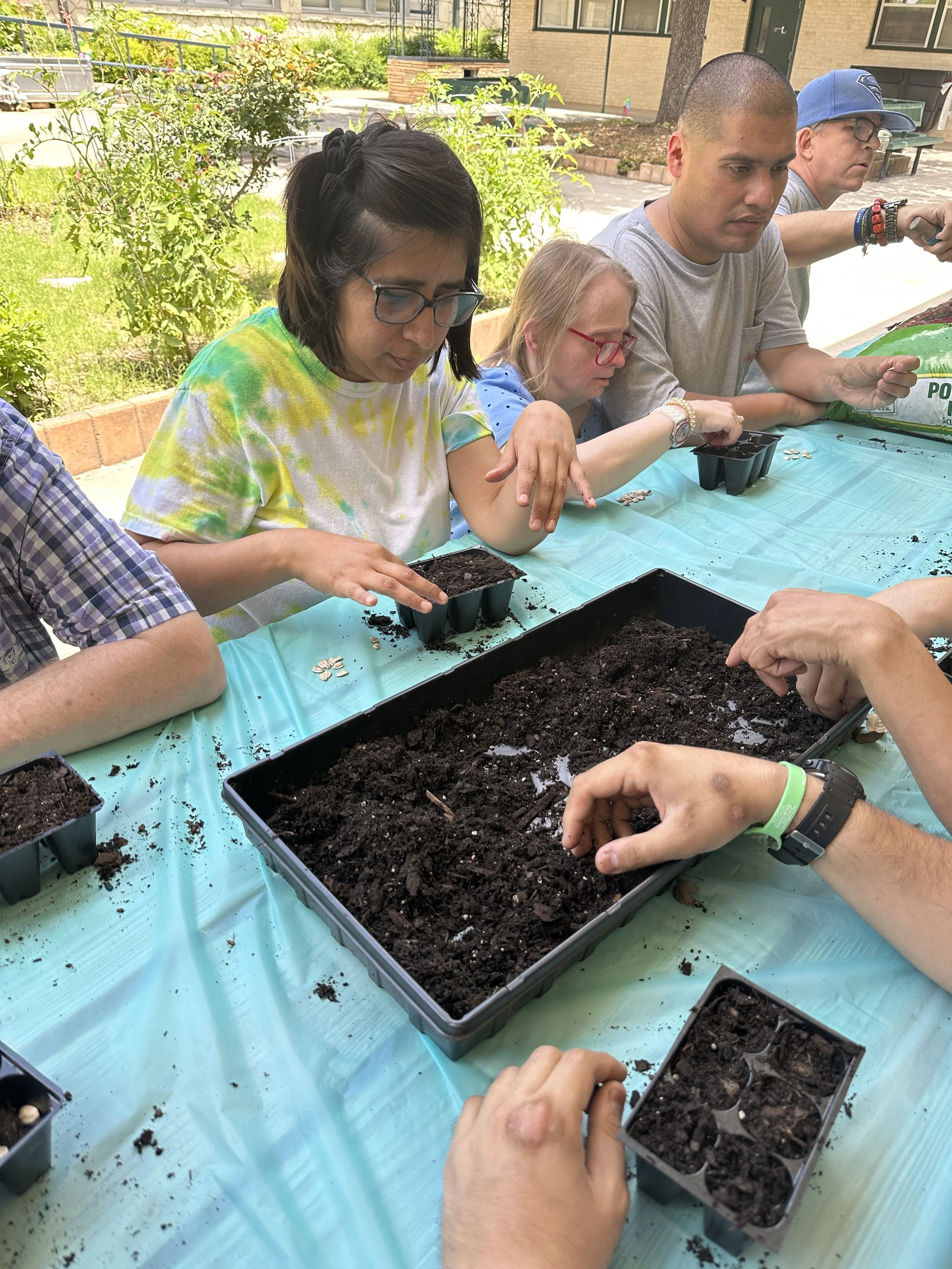Blog Post Two
Buda’s Brightside friends growing plants for our garden in our new courtyard and for mother’s day.
Bridging the Gap: Supporting Growth Beyond Public School for Individuals with Developmental Disabilities
Transitioning from the structured environment of public school to the next phase of life is a significant milestone for any young adult. However, for students with developmental disabilities, this transition often highlights a critical gap in services and support. After aging out of the public school system, many individuals face limited opportunities to continue developing essential life and social skills. It is imperative to address this gap by providing safe, nurturing environments where these individuals can continue to grow and thrive.
The Challenge of Aging Out
Public schools offer a structured setting with specialized programs designed to support students with developmental disabilities. These programs often include individualized education plans (IEPs), access to therapists, and social skill-building activities. However, once students age out—typically at age 22—they lose access to these tailored services. This abrupt end to support can leave families scrambling to find alternatives that offer similar levels of care and engagement.
The Importance of Continued Growth
Life and social skills are vital for independence and quality of life. For individuals with developmental disabilities, continuous development in these areas is crucial. Life skills such as cooking, managing finances, and personal care empower individuals to live more independently. Social skills, including communication, teamwork, and conflict resolution, enable them to build meaningful relationships and participate fully in their communities.
Without ongoing opportunities to practice and develop these skills, individuals may struggle with daily tasks and social interactions, leading to isolation and dependence. Therefore, it is essential to provide environments where they can continue to learn, practice, and enhance these abilities.
Creating Safe and Nurturing Environments
Dayhab centers, such as Buda's Brightside, play a vital role in bridging this gap. These centers offer a safe, nurturing environment where individuals with developmental disabilities can continue their personal growth journey. By providing structured programs and activities tailored to their needs, dayhab centers ensure that these individuals do not lose the progress they made in school.
Key Benefits of Dayhab Centers
1. Skill Development: Dayhab centers offer programs focused on life skills, social skills, and vocational training. This ongoing education helps individuals gain confidence and independence.
2. Social Engagement: By fostering a community atmosphere, dayhab centers provide opportunities for social interaction, helping individuals build friendships and social networks.
3. Personalized Support: Staff at dayhab centers are trained to understand and cater to the unique needs of each individual, offering personalized support and care.
4. Community Integration: These centers often collaborate with local businesses and organizations, promoting inclusion and providing real-world experiences for their participants.
The Role of Families and Communities
Families play a crucial role in supporting their loved ones during this transition. Advocacy and involvement in choosing the right dayhab center can make a significant difference. Additionally, communities must recognize the importance of these centers and support them through partnerships, funding, and volunteering.
Moving Forward
To truly address the gap left by aging out of the public school system, it is essential to continue raising awareness about the needs of individuals with developmental disabilities. By investing in programs and facilities that promote skill development and social engagement, we can ensure that these individuals have the opportunity to lead fulfilling, independent lives.
Conclusion
Bridging the gap from public school to adulthood for individuals with developmental disabilities is a critical challenge that requires concerted effort from families, communities, and service providers. By creating and supporting safe, nurturing environments like Buda's Brightside, we can help these individuals continue to grow, thrive, and lead meaningful lives. Together, we can make a difference and ensure that every individual, regardless of ability, has the opportunity to reach their full potential.
